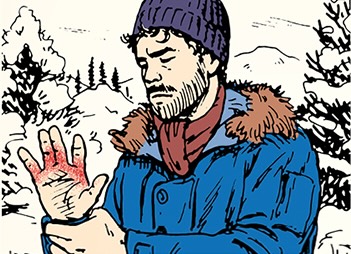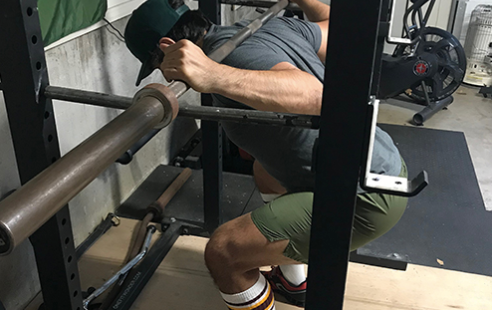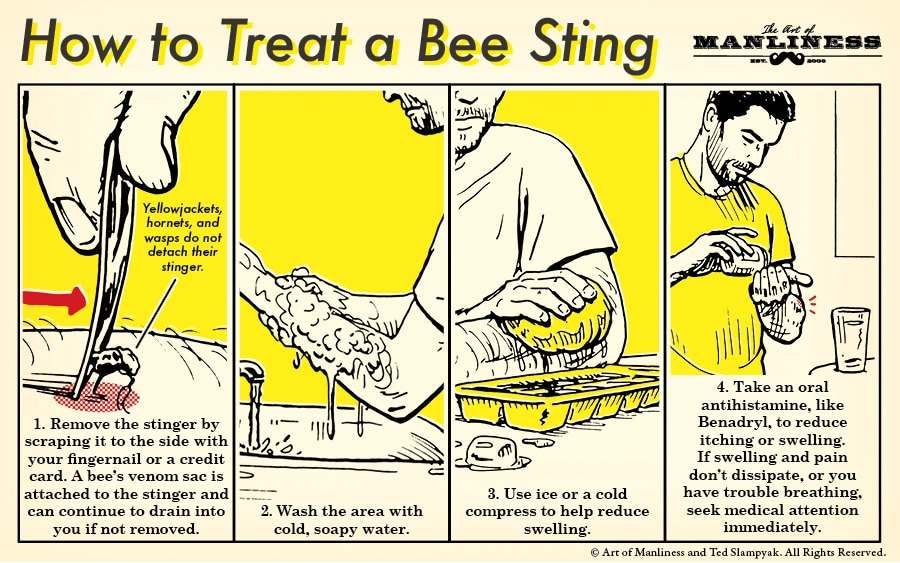
Last year I developed a terrible case of tennis elbow.
On the day of its initial onset, I woke up feeling fine. But by the afternoon, it felt like electric shocks were surging through my right forearm, just below the elbow. It’s a hard feeling to describe, but it’s painful.
I started to do some tennis elbow rehab exercises that I found on YouTube, but they didn’t seem to help. I had to take a break from my weightlifting for a few weeks and found daily maintenance activities painful to perform. I was super bummed.
About a month later, I woke up with the exact same feeling in my left arm! I now had tennis elbow in both arms. Bogus!
I finally decided to go to a physical therapist to see what they recommended and connected with Cord DeMoss at Vitality Therapy here in Tulsa.
Thanks to his coaching and treatment, I was finally able to heal my tennis elbow. It took a long time, though. My tennis elbow started in September 2021. It wasn’t until April 2022 that I could finally say all the pain from my tennis elbow was gone. That’s eight months.
Based on my experience with tennis elbow, I’ve concluded that it’s one of the dumbest injuries that can befall you.
It can be debilitating. I couldn’t pick up heavy things for several months. Shaking hands with people would cause a shock of pain to pulse down my arm. Opening doors was painful. Even picking up a cup made me wince.
And it takes forever to heal because it’s a tendon injury and tendon injuries are a booger to treat.
D – u – m – b. Dumb.
For those of you who are currently suffering from or may one day suffer from this dumb malady, I present to you the rehab protocol I used to heal it.
It worked for my case of tennis elbow. Maybe it will give you some ideas on how to treat yours.
What Is Tennis Elbow?
The scientific name for tennis elbow is lateral epicondylitis. It’s a tendinopathy (tendon injury) of the extensor tendons on the outside of your elbow. It’s not tendonitis or simple inflammation of the tendon. You can treat tendonitis in a few days or weeks with some rest and Advil.
When you have tennis elbow, the tendon tissue is damaged. It’s breaking down. It’s caused by the repetitive contraction of the forearm muscles that you use to straighten and raise your hand and wrist.
While it’s called tennis elbow because tennis players often get it, it can happen to anyone, like, for example, middle-aged bloggers/podcasters who powerlift recreationally. If you do something that causes the repeated contraction of your forearm muscles, you’re at risk of developing tennis elbow. Painting, driving screws, and using a computer mouse a lot can cause tennis elbow. I think mine came in part from how I was sitting at my desk.
You’ll usually experience the pain of tennis elbow where your forearm tendons attach to the outside of your elbow. In severe cases, you can have pain that spreads all the way down your forearm. My tennis elbow started at my elbow and would shoot about halfway down my forearm.
You won’t feel pain all the time when you have tennis elbow. If you keep your arm straight, you’ll be pain-free. Bending your hand backward, picking up a cup, and turning a doorknob will usually trigger tennis elbow and create a surge of pain. Shaking hands will also do it.
Because tennis elbow is a tendon injury, it will take a long time to heal. That’s because not a lot of blood goes to your tendons, so the injury doesn’t get the nourishment it needs to rebuild.
How to Rehab Your Tennis Elbow
Below I highlight the rehab protocol I used for my tennis elbow:
Slow reverse wrist curls. To heal your tennis elbow, you have to strengthen your tendon. The best way to do that is with reverse wrist curls.
Start with curling a really light weight. I’m talking “the two-pound rubber dumbbells you can get at CVS” light. You’ll be tempted to go heavier, but don’t. It will take you to the pain cave.
Sit on a bench with your CVS dumbbell and lean forward.
Hold the dumbbell with an overhand grip (palm down) and rest your forearm on your knee.
Extend your hand back toward your forearm. If this hurts a lot, you can use your free hand to help you get the weight back. This part of the movement isn’t that important in rehabbing your tennis elbow.
Slowly lower your hand back down. And when I say slowly, I mean slowly. It should take a ten-count to bring your hand back down — this is where the magic happens for tendinopathy rehab. Research has shown that slow, eccentric movements are what help strengthen tendons the most. So make the eccentric part of the movement last as long as possible.
Repeat for ten reps.
Do three sets.
I did these every other day. As your tennis elbow starts to feel better, slowly add weight.
You can buy Therabands to do reverse wrist curls. A lot of people swear by them. I bought them but preferred the dumbbells. To each their own. Do what works for you.
Wrist extension isometrics. Isometric holds are another great way to rehab tendinopathies. I used them when treating my adductor tendonosis. First, they produce a temporary analgesic (pain-reducing) effect in your mind and body. So isometrics take a bit of the edge off your tennis elbow pain. Second, isometrics help bring blood to and strengthen your tendon tissue.
To perform wrist extension isometrics, get on your hands and knees.
Sit back on your heels and keep your elbows completely locked out.
Extend your wrist and bring your fingers off the floor. Press the heel of your palm into the floor. It should feel like your forearm is contracted, and you’re pressing into the floor with the heel of your palm. Hold that position for 30 seconds. This is the isometric contraction we’re looking for.
Rock forward and bring your fingers onto the floor. This will take your forearm out of contraction.
Repeat for five reps.
I did this every other day after my reverse wrist curls.
Cross-friction massage. According to Bob and Brad, “The Two Most Famous Physical Therapists on the Internet,” cross friction massage can help speed the healing of tennis elbow.
The way they explain it is that when you have tendinopathy, the tissue in your tendon is scarred and disorganized. Cross-friction massage helps bring nourishing blood to your tendon, breaks down scar tissue, and helps reorganize the damaged tendon. While I’m dubious that you can manually manipulate your tendon tissues so they line back up, the cross-friction massage did seem to help in healing.
Find the extensor muscle near your elbow that hurts.
Take two fingers on your other hand, press firmly down on the extensor muscle, and then move it back and forth, perpendicular across the extensor tendon. It might be a little tender initially, but it will start feeling better the longer you do it.
Perform your cross-friction massage for a few minutes.
I was pretty liberal with the cross-friction massage. I’d do it all the time. At home; sitting in traffic; standing in line at the post office. My kids called it “tendonizing.” It became a running joke in my family that Dad was always tendonizing. Tendonizing worked, though! Put that in your pipe and smoke it, Gus and Scout.

Change your desk setup. While I don’t know what exactly caused my tennis elbow, my hunch is that it had to do with poor workstation ergonomics. I’m sure the way I had my laptop set up on my desk was causing my wrists to be in extension all the time, which contributed to the tennis elbow.
The thing that helped me was to get a Magic Keyboard for my laptop and place it in a keyboard tray beneath my desktop. This helped keep my elbows at a 90-degree angle, preventing my wrists from being in constant contraction.

I also bought a vertical mouse. It puts your wrist in a more neutral position. It feels a lot more comfortable.
I had been doing the wrist curls and isometrics for a few months before I updated my desk setup. It wasn’t until I changed my desk setup with the keyboard tray and upright mouse that I noticed an improvement. Making my workspace more ergonomic definitely had an impact on my tennis elbow.
The big takeaway here is to find the underlying cause of your tennis elbow and do what you can to eliminate or mitigate it.
Get back to regular activity as soon as possible. When you have tennis elbow, it hurts to do a lot of basic things. It can be especially painful to exercise. Consequently, your initial impulse will likely be to take a break from all physical activity until your tennis elbow heals. That’s what I did when tennis elbow first hit me.
But the research suggests that resting doesn’t do much for tendiopathies. In fact, resting can get in the way of your tennis elbow healing.
To strengthen the tendon, you need to put it under load. You need to use it. Motion is lotion!
In addition to having me perform the above exercises, Cord was adamant that I get back under the barbell as soon as possible. He explained that the load and movement would help strengthen and get blood near the tendon.
Be patient! Beyond the above exercises and environmental tweaks, the most helpful advice I can give you for rehabbing your tennis elbow is to be patient. It won’t get better overnight. It won’t get better in a week. It won’t even get better in a month. Expect it to take at least three months before you start noticing an improvement and up to a year to recover fully. From the time I started actively rehabbing my tennis elbow, it took six months for it to completely go away.
It’s frustrating. I remember thinking, “Are these dopey little rehab exercises doing anything?” It might not feel like they are, but they are. Stick with them.
Also, when it starts to feel better, it will be gradual. It won’t be sudden. You’ll also have days where it feels like it’s getting better, and then the next day, it will feel worse than ever. It’s two steps forward, one step back. Try not to get too discouraged on those days when it feels like you’re going backward in your recovery.
Stuff That Might Have Helped
When I visited Cord, we’d primarily focus on the strengthening exercises. We’d occasionally do some treatments which Cord described as more “gray” — the research isn’t conclusive that the treatments help, but it isn’t clear that they don’t, either, and they don’t hurt to try.
The two gray treatments we did were dry needling and blood flow restriction:
Dry needling. Dry needling is akin to the Western version of acupuncture. Your PT will stick a needle in the area that hurts. It causes tiny muscle contractions, which are supposed to help in the healing process. That’s the theory, at least.
We did dry needling a few times on my tennis elbow. It felt nice afterward. I don’t know how much it contributed to my healing. I think I likely got a big placebo benefit out of it. It just felt good to feel like I was proactively doing something to heal my tennis elbow. And after our podcast about the weird wonders of the placebo effect, I no longer discount its power. If it helps, it helps.
Blood flow restriction. This technique was developed in Japan in the 60s and has grown in popularity amongst physical therapists in recent years.
You restrict the blood flow to the injured area with a band or a pneumatic cuff. You then perform low-intensity, high-rep muscle contraction exercises. The added stress of the blood flow restriction is supposed to help enhance the healing process; after you release the restriction, the affected area receives a rush of blood.
In my case, Cord would put a pneumatic cuff around my bicep. He had this fancy physical therapist blood flow restriction rig that calibrates the pressure precisely. I’d then do sets of the reverse wrist curls at high reps. I’d start with a set of 30 reps and rest for 30 seconds. I’d follow that up with four more sets of 15 reps, 30 seconds between each set.
We only did blood flow restriction a few times.
I’m not sure how much it helped. But again, it was nice to feel like I was doing something.
If you have tennis elbow, I don’t think dry needling and blood flow restriction are necessary. Don’t get me wrong. I enjoyed them. But while they made me feel good afterwards, I’m not sure they did much overall. And of course they cost money. If you decide to do these treatments, go to a licensed professional to get them done.
Concluding Thoughts
During my rehab process, I didn’t use nonsteroidal anti-inflammatory drugs like ibuprofen for the pain. Again, tennis elbow isn’t an inflammation problem. Your tendon is degraded. Advil won’t help.
I also didn’t get cortisone shots. Based on my research and talking with Cord, cortisone shots can provide temporary pain relief but don’t do much to strengthen and heal your tennis elbow, which is what you need to do if you want to eliminate the pain completely.
Visiting Cord was a big morale boost. He did a great job keeping me proactive in my rehabilitation, holding me accountable for doing my rehab exercises at home, and encouraging me when I was feeling particularly down about my injury. If you’ve been battling tennis elbow for a while, consider visiting a physical therapist.
Reverse wrist curls. Wrist extension isometrics. Cross-friction massage. Practicing better ergonomics.
That was it.
The biggest thing, though, was time.
Tennis elbow is a dumb injury that takes a stupidly long time to get better.
If you’re smart, you’ll be proactive but patient in dealing with this dumbness.







